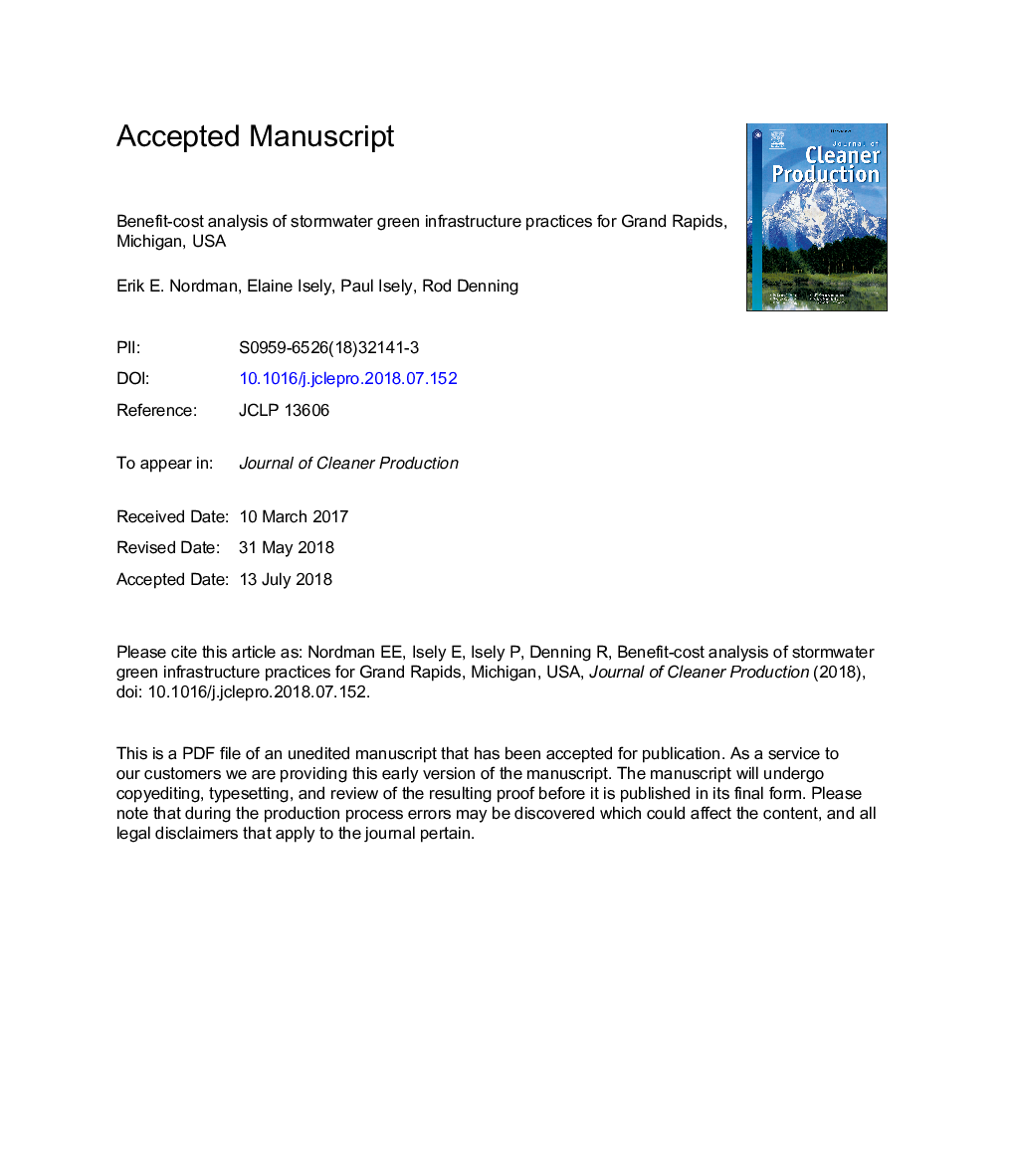| کد مقاله | کد نشریه | سال انتشار | مقاله انگلیسی | نسخه تمام متن |
|---|---|---|---|---|
| 8093193 | 1522052 | 2018 | 29 صفحه PDF | دانلود رایگان |
عنوان انگلیسی مقاله ISI
Benefit-cost analysis of stormwater green infrastructure practices for Grand Rapids, Michigan, USA
ترجمه فارسی عنوان
تجزیه و تحلیل هزینه مزایای استفاده از زیرساخت های سبز طوفان برای گراند راپیدز، میشیگان، ایالات متحده آمریکا
دانلود مقاله + سفارش ترجمه
دانلود مقاله ISI انگلیسی
رایگان برای ایرانیان
کلمات کلیدی
زیرساخت سبز، تجزیه و تحلیل هزینه سود، پیاده رو متخلخل، باران باغ، جنگل شهری، سقف سبز،
موضوعات مرتبط
مهندسی و علوم پایه
مهندسی انرژی
انرژی های تجدید پذیر، توسعه پایدار و محیط زیست
چکیده انگلیسی
Grand Rapids, Michigan, USA is a medium-sized city located within the Lake Michigan watershed. Grand Rapids spends a considerable amount of money managing stormwater. Impervious surfaces collect and concentrate volumes of water and associated sediments and pollutants creating flooding, erosion, and pollution problems especially, for downstream communities. An ecological paradigm has emerged that places stormwater quantity and quality within the context of integrated watershed management. Stormwater quantity can be reduced and quality can be improved by, for example, mimicking natural hydrology. Detailed benefit-cost analyses, however, are still lacking. Therefore, the research team estimated the economic benefits and costs of various green infrastructure (GI) practices. Each GI practice was standardized to treat 84.95â¯m3 (3000â¯ft3) of stormwater per 25.4â¯mm (1.0 inch) event plus the first 25.4â¯mm of stormwater from larger events. This equates to about 3030â¯m3 (107,000â¯ft3) of stormwater per year. A benefit transfer approach was used to estimate the net present value (NPV) of capital, operations, and maintenance costs, as well as the direct and indirect benefits. The suite of benefits varied for each GI practice and included flood risk reduction; reductions in stormwater volume, total phosphorus, total suspended solids, and air pollution; scenic amenity value; and CO2 storage. A 3.5 percent discount rate was applied to all costs and benefits, and each practice was analyzed over 50 years. Conserved natural areas had the largest NPV at $109/m3 of water quality volume (WQv) reduced, followed by street trees at $46/m3 WQv, rain gardens at $37/m3 WQv, and porous asphalt at $21/m3 WQv. Infiltrating bioretention basins and green roofs had negative NPVs of $-3.76/m3 WQv and $-47.17/m3 WQv, respectively. If the green roof is used to attain certification such as Leadership in Energy and Environmental Design, then the net benefits turn positive. This paper will help both academic researchers and stormwater managers in the Great Lakes region and beyond understand the relative benefits and costs of stormwater GI so cost-effective practices can be implemented. The calculations presented here form the basis of the www.RainwaterRewards.com stormwater GI calculator.
ناشر
Database: Elsevier - ScienceDirect (ساینس دایرکت)
Journal: Journal of Cleaner Production - Volume 200, 1 November 2018, Pages 501-510
Journal: Journal of Cleaner Production - Volume 200, 1 November 2018, Pages 501-510
نویسندگان
Erik E. Nordman, Elaine Isely, Paul Isely, Rod Denning,
